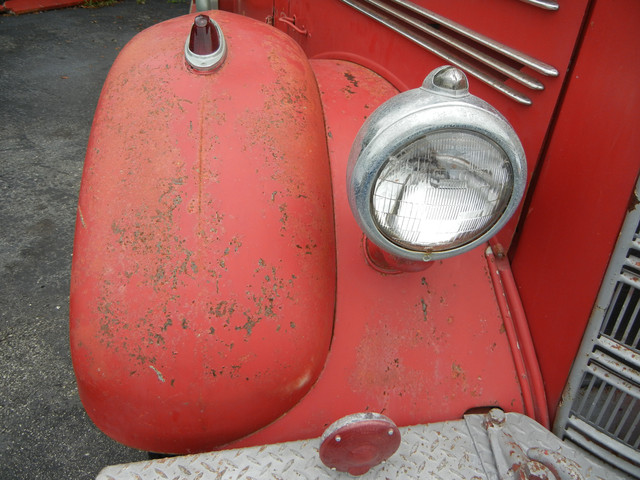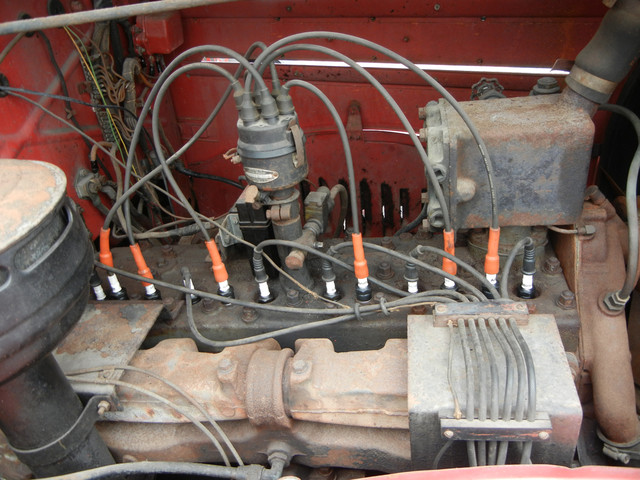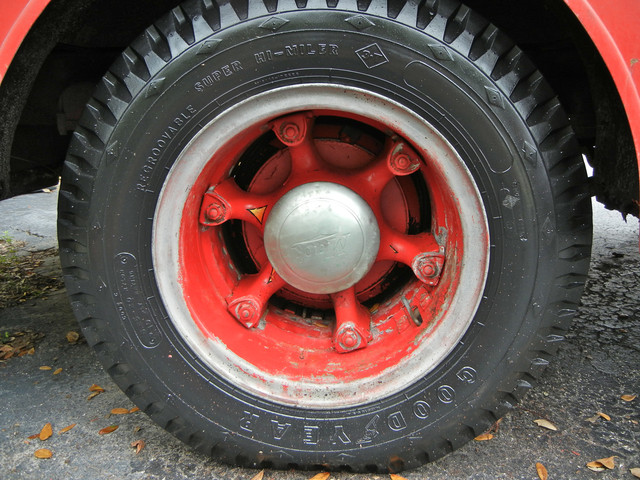Starting in the war years of the mid-1940s and right through the 1950s, if you lived in a small to mid-sized town in America you thought of a Mack Type 45 when someone mentioned the words “fire truck”. Back in that era, Mack sold these trucks as “district pumpers” meaning that they were intended for use by small departments fighting fires in relatively small buildings. Large cities had far larger pumper trucks and ladders to combat flaming high rises and blazes that could potentially spread for blocks at a time. The then growing suburbs didn’t need that kind of fire fighting artillery and Mack recognized that, building these trucks to fit that market.
What we find cool about this truck is the closed cab. The majority of fire trucks of this era had open/roofless cabs. We’re not 100% sure why this tradition held on for so long (open cab rigs can still be found out west) but we have to imagine it was a hold out from the era when firemen sped to fires sitting on horse drawn pumper buggies and the like. The closed cab of this one just looks “right” in our eyes.
The engine in this truck, a flathead style gas burner measures out at about 280ci and makes in the neighborhood of 120hp, give or take. The transmission, since we’re seeing only one stick to stir it with is probably a 5-speed meat grinder with first gear being a “hole gear” (read: underdrive/granny gear) to help the truck crawl out of any non-pavement situations or steep inclines.
Interestingly, Mack made this truck from front to back, firefighting equipment included. Normally these trucks had a pumping capacity of about 500 gallons per minute, with lesser options available. As time and technology progressed, those numbers grew, but if we were putting a guess on it, we’d say that this truck could move about 500 gallons per minute with the pump spinning and full speed. We have visions of blasting Priuses with that just to see what would happen.
According to the ad, the truck has about 7,000 original miles on it. In the photos you’ll see a fresh distributor cap, wires and plugs, so the natural assumption is that this baby runs. If we had $13,000 and a week to road trip it home we’d own this truck in a New York-minute! They’re pretty rare to see these days, it is virtually complete and you could power wash the hell out of stuff once you got the pumping system fixed.
That and it is a wonderful looking old truck with that nice Mack front end on it. Are we crazy or do you want it too?
Scroll down to see the photos and the eBay ad!



























Cool! I love how they include the one Armoralled-to-death, underinflated tire photo, when in all the other snaps, the old, nasty “meats” are covered in dirt and grime.
Great minds think alike Brian. I’m digging the dual plug flattie.
I’m trying to figure out the ignition arrangement here. I see the disty with wires leading to the 6 plugs, but what are the other six plugs? And where do their wires lead too? And why are there 2 different types of plugs in use here?
I found this:Although there was a significant industry shift to diesel powered
apparatus, Mack offered its long-running 707 gasoline engine in the R
model chassis until 1973. While the Mack diesel engines were more
popular in the R model fire chassis, ultimately 61 Mack R models were
built with the 707C gasoline inline 6 engine, producing 273hp at 2400
rpm from its 707 cubic inch displacement. The 707C also featured
dual ignition, including dual coils, distributors and spark plug
systems. The driver could choose to run the engine on the left
ignition, right ignition or both as an added measure of safety.
I also read one system was sometimes a magneto, so the engine would run with a total electrical system failure. Also note the hole in the bumper, it was so you could hand crank the engine.